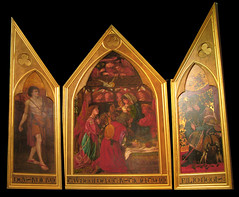
Once more into the fray with A. D. Howell Smith in his arguments against the Christ mythicists of his day. . . .
This time it is with a historicist’s concession that Romans 1:3 — the statement that Jesus was born of the seed of David — could well be part of a passage that was only later added to Paul’s original letter.
Here is what he writes on page 135 of Jesus Not A Myth (1942) with my own emphasis and formatting:
Couchoud follows Rylands and other Mythicists in regarding the Crucifixion as a mystical and transcendental event. The Christ is slain by the “Archons” in some sub-celestial, but super-terrestrial, region.
Most careful readers of Paul’s Epistles will consider this view of his teaching as grotesque. Couchoud makes Paul a Docetist, one who believed that the body of Jesus was not of flesh, but only appeared to be so.
The phrase “born of the seed of David according to the flesh” (Rom. i, 3) may well be an interpolation, as it is part of a long, clumsy sentence, which is suspiciously overloaded with phrases that seem to be dragged in for polemic purposes. . . . . Continue reading “Another Possible Interpolation Conceded by Historicists of Old (and a question of heavenly trees)”
